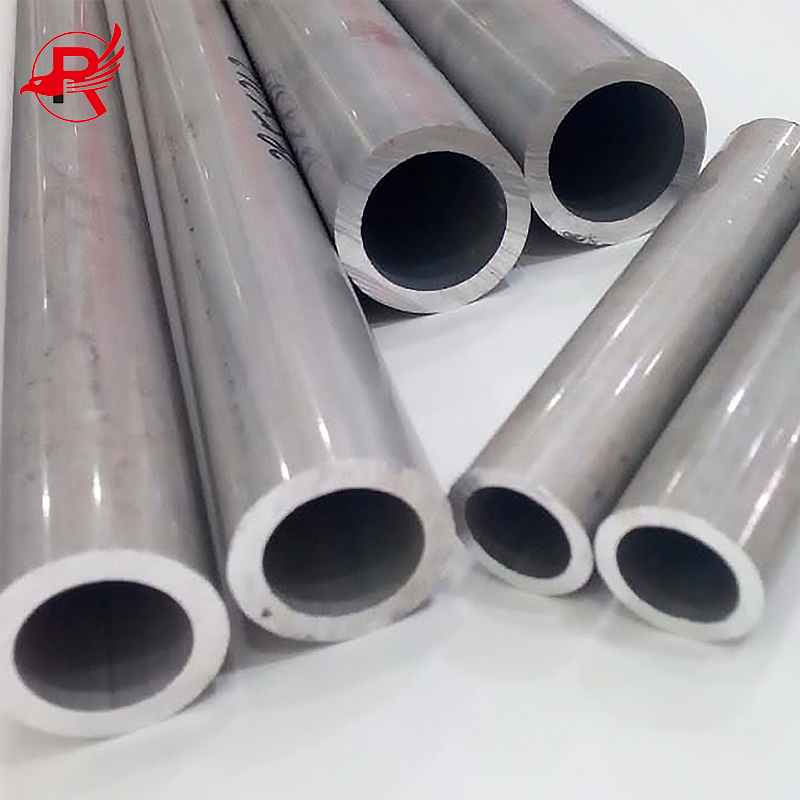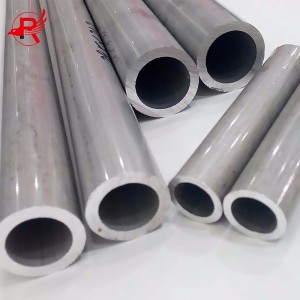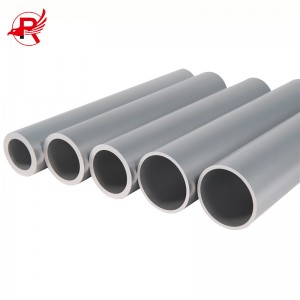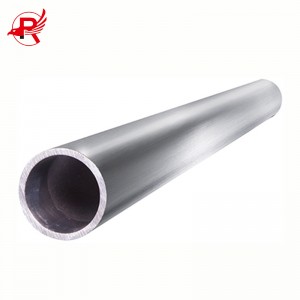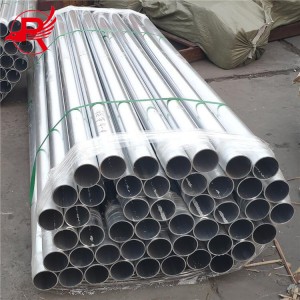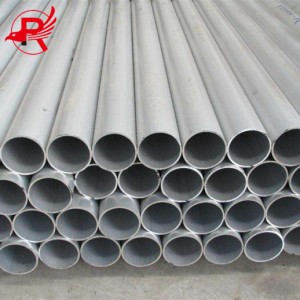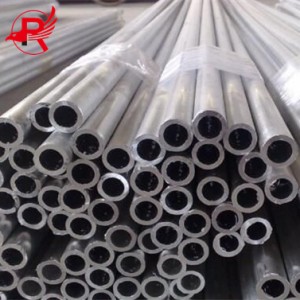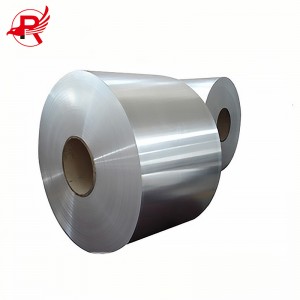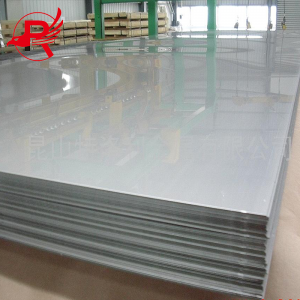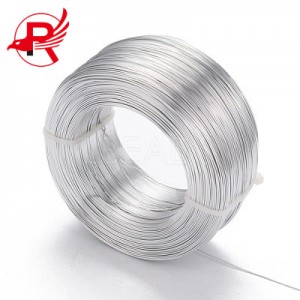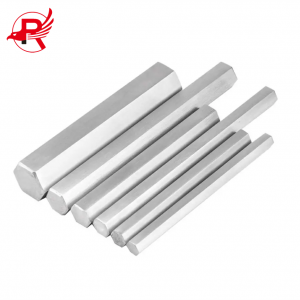China Supplier 5052 7075 Aluminum Pipe 60mm Round Aluminum Pipe
Product Detail
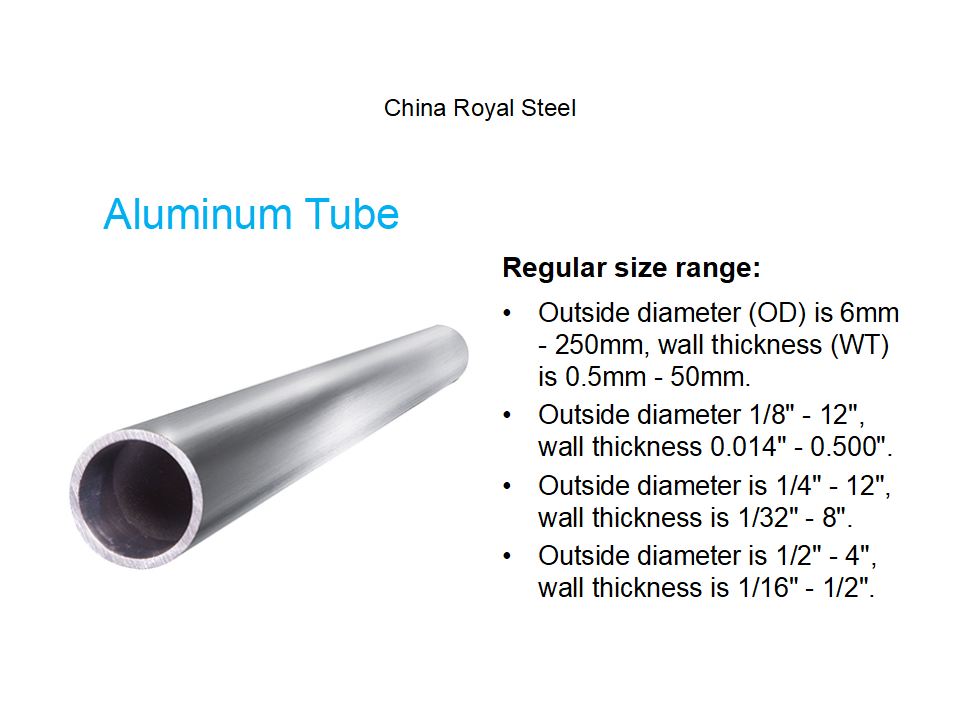
Here is some key information about aluminum tubes:
Material: Aluminum tubes are made of aluminum, typically with alloying elements added to enhance properties such as strength and corrosion resistance. Common aluminum alloy series for tubes include 6xxx, 5xxx, and 3xxx.
Dimensions: Aluminum tubes come in various sizes and dimensions, including outside diameter (OD), inside diameter (ID), and wall thickness. These dimensions are usually measured in millimeters or inches.
Tolerance: To ensure dimensional accuracy and consistency, aluminum tubes must meet specific tolerance requirements.
Surface finish: Aluminum tubes typically have a smooth surface. They can be left untreated or undergo surface treatments such as polishing or anodizing to enhance aesthetics or corrosion resistance.
Mechanical properties: The mechanical properties of aluminum tubes depend on the alloy type and heat treatment. Common mechanical properties include tensile strength, yield strength, elongation, and hardness. Suitable properties can be selected based on the specific application requirements.
Chemical composition: The chemical composition of aluminum tubes is specified by industry standards or customer requirements. The primary component is aluminum, with additional alloying elements such as copper, magnesium, manganese, or zinc.
Corrosion resistance: Aluminum tubes are known for their excellent corrosion resistance. The natural oxide layer on the aluminum surface effectively prevents oxidation and corrosion. Furthermore, certain alloying elements can further enhance the corrosion resistance of the tubes in various environments.
Connection methods: Aluminum tubes can be connected using various methods, including welding, brazing, or mechanical fastening. The chosen connection method depends on factors such as tube diameter, application requirements, and the type of alloy used.
Please note that for detailed technical information on specific aluminum tubes, refer to relevant industry standards or the supplier's specifications, as the technical parameters may vary depending on the application and the type of alloy used.
SPECIFICATIONS FOR ALUMINUM PIPES
|
Aluminum Tube/Pipe
|
||
|
Standard
|
ASTM, ASME, EN, JIS, DIN, GB
|
|
|
Specifcation for round pipe |
OD
|
3-300 mm,or customized
|
|
WT
|
0.3-60 mm,or customized
|
|
|
Length
|
1-12m,or customized
|
|
|
Specification for square pipe
|
SIZE
|
7X7mm- 150X150 mm,or customized
|
|
WT
|
1-40mm,or customized
|
|
|
Length
|
1-12m,or customized
|
|
| Material Grade |
1000 series: 1050, 1060, 1070, 1080, 1100, 1435, etc
2000 series: 2011, 2014, 2017, 2024, etc 3000 series: 3002, 3003, 3104, 3204, 3030, etc 5000 series: 5005, 5025, 5040, 5056, 5083, etc 6000 series: 6101, 6003, 6061, 6063, 6020, 6201, 6262, 6082, etc 7000 series: 7003, 7005, 7050, 7075, etc |
|
|
Surface treatment
|
Mill finished, anodized, powder coating, Sand blast, etc
|
|
|
Surface colors
|
Nature, silver, bronze, champagne, black, gloden or as customized
|
|
|
Usage
|
Auto /doors/decoration/construction/curtain wall
|
|
|
Packing
|
Protective film+plastic film or EPE+kraft paper,or customized
|
|



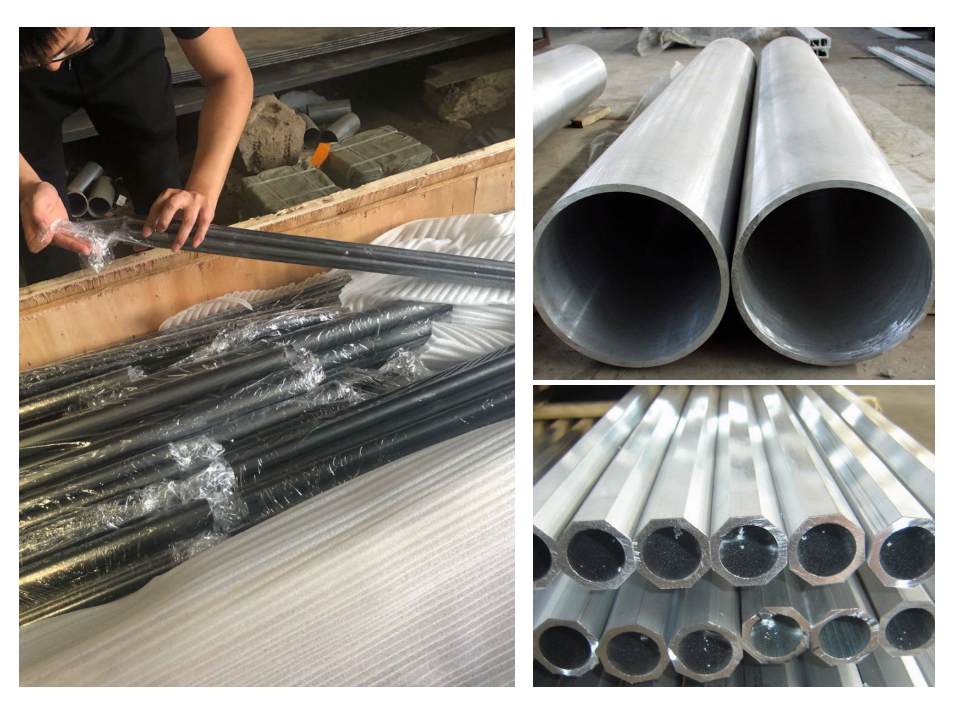
SPECIFIC APPLICATION
Aluminum pipes are widely used across various industries due to their excellent properties. Here are some common applications of aluminum pipes:
HVAC Systems: Aluminum pipes are widely used in HVAC (Heating, Ventilation, and Air Conditioning) systems due to their superior thermal conductivity. They are used as conduits for transporting coolants or refrigerants.
Plumbing Systems: Aluminum pipes are used in plumbing systems, particularly in residential and commercial buildings. Their lightweight, ease of installation, and corrosion resistance make them ideal for transporting water, gas, or wastewater.
Automotive Industry: Aluminum pipes are used extensively in various automotive applications, including radiator systems, intake systems, turbocharger piping, and exhaust systems. They help reduce weight while providing efficient heat transfer and improved fuel efficiency.
Industrial Processes: Aluminum pipes are used in industrial processes involving the transport of liquids or gases. They are commonly used in industries such as chemical processing, oil and gas, pharmaceuticals, food and beverage, and wastewater treatment.
Solar Energy Systems: Aluminum pipes are used in solar thermal energy systems due to their high heat transfer capabilities. They are commonly used as piping in solar water heating systems.
Construction and Architecture: Aluminum pipes have a wide range of applications in construction and architecture, including structural applications, railings, curtain walls, and cladding systems. They offer durability, lightweight construction, and design flexibility.
Electrical Applications: Aluminum pipes, especially those made of high-conductivity alloys, are used in electrical applications. Due to their excellent conductivity, they are used for wiring, power distribution, and busbars.
Furniture and Interior Design: Aluminum pipes are popular in the furniture and interior design industry. They are used for items such as chairs, tables, shelves, and curtain rods, as they offer a modern and stylish look and are easy to customize.
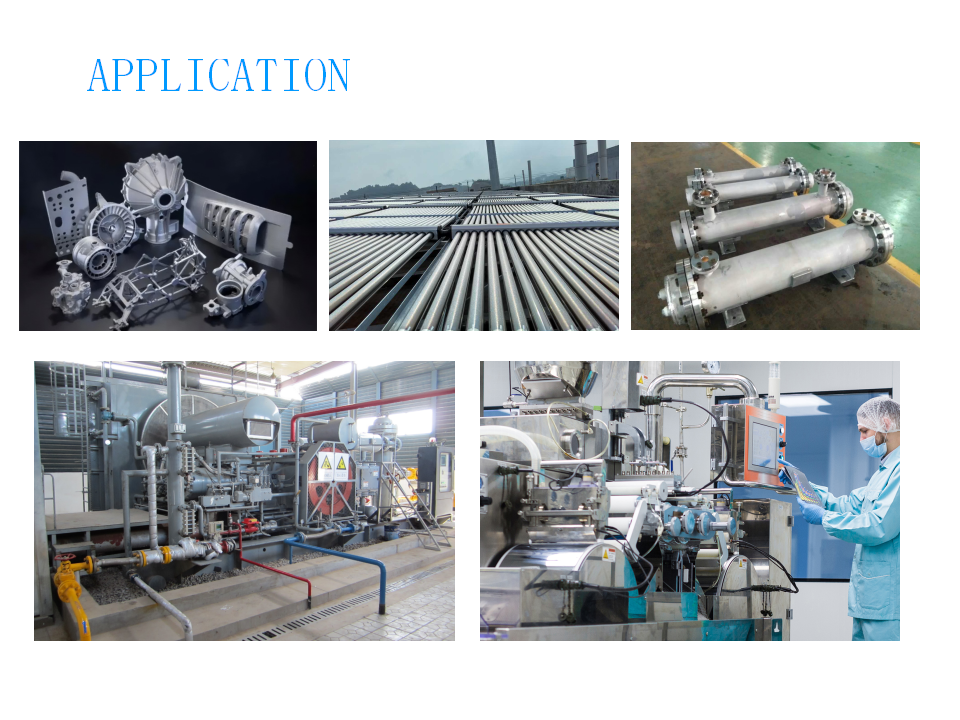
Packaging & Shipping
When packaging and transporting aluminum tubes, it is essential to ensure proper protection to prevent any damage during transit. Here are some guidelines to consider:
Packaging Material: Use sturdy and durable packaging materials, such as cardboard tubes or boxes. Ensure the packaging is the right size to securely hold the aluminum tubes.
Padding and Cushioning: Inside the packaging, place sufficient padding and cushioning material around the aluminum tubes, such as bubble wrap or foam. This helps absorb any shocks or impacts during transport.
Secure the Ends: To prevent the aluminum tubes from sliding or shifting inside the packaging, secure them with tape or end caps. This adds stability and minimizes the risk of damage.
Labeling: Clearly label the packaging with information such as "Fragile," "Handle with Care," or "Aluminum Tubes." This will remind handlers to take necessary precautions during transport.
Secure Closure: Seal the packaging tightly with strong packaging tape to ensure it remains intact throughout the entire transport process.
Consider Stacking and Overlapping: If multiple aluminum tubes are being transported together, consider stacking them in a way that minimizes movement and overlapping. This helps distribute the weight evenly and reduces the risk of damage.
Choose a Reliable Shipping Service: Select a reliable shipping service provider that specializes in handling fragile or sensitive goods.



